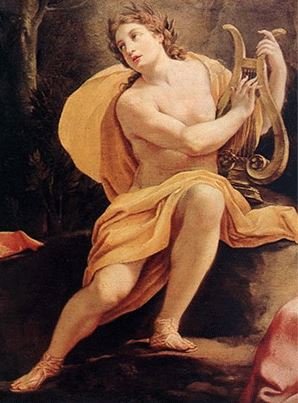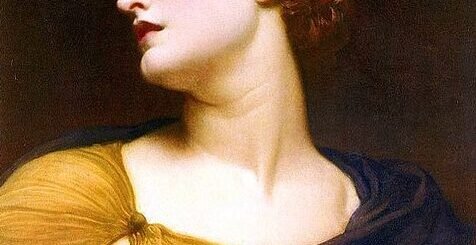24 Bright Facts about Apollo – the Greek Sun God

24 Bright Facts about Apollo – the Greek Sun God
Venerated all over ancient Greece for so many things, Apollo was a beardless, athletically built and morally upright god of the sun and light. In addition to his numerous attributes, Apollo was the leader of the Muses – a group of nine celestial deities chiefly responsible for inspiring the humans in arts, poetry and music.
As a patron god of law, justice and order, Apollo symbolized harmony, reasoning and moderation – the perfect Hellenic ideal of Kalokagthia. The following are 24 bright and interesting facts about Apollo and his symbols:
- In the 5th century BCE, Apollo and Helios (the Greek god of the sun) were commonly seen as the same deity. They were associated with the word “Phoebus”. The word translates into “bright” and sometimes “pure”. As a result, those two gods were often revered as the gods of truth. This trait inspired confidence in people whenever listening to Apollo’s prophecy of the future at the various temples of Apollo.
- As a Graeco-Roman god of the sun and light, Apollo was also the god of music, poetry, arts, oracles, archery, herds and flocks, diseases, healing, knowledge, and the guardian of young people.
- His parents were the mighty Olympian god king Zeus, and the Titan goddess Leto.
- Apollo’s mother, Leto, gave birth to both Artemis and Apollo under a palm tree. Artemis, the goddess of the hunt, was Apollo’s twin sister.
- Solely fed a diet that was a combination of nectar and ambrosia, it is believed that Apollo only needed about four days to grow into a strong and full-grown god.
- Another very important fact about Apollo was his physical prowess and moral virtue. Those characteristics were on display for all the Olympian gods and goddess to admire and love.
- After seeing how awesome and magnificent Apollo was when he slew the Python in Delphi, Eros (the god of love) took Apollo as his mentor. Eros also mistakenly shot Apollo with his golden love arrow. This made Apollo fall madly in love with Daphne, a nymph.
- Apollo once connived with Poseidon, the god of the sea, to overthrow Zeus from his throne. Furious and feeling betrayed, Zeus made them do back-breaking work for mortals across the earth. One of the fruits of their labor was the Walls of Troy – a colossal wall that proved impenetrable for a very long time, until the time of the Trojan War.
- Apollo’s face and head was commonly featured on ancient Greek coins. This was around the 5th century BCE.
- One of Apollo’s children, Erymanthos, mistakenly witnessed Aphrodite in the company of Adonis. The enraged goddess of beauty and love Aphrodite took the sight of Erymanthos. When news of this got to Apollo, he took revenge by turning himself into an Erymanthian Boar and killed Adonis.
- The god of love Eros (Cupid) was the reason why Apollo developed an unhealthy love interest and obsession with Daphne. Due to a minor disagreement, Eros shot Apollo with his love arrow and made him fall in love with the Nymph Daphne.
- After briefly falling out of favor with Zeus, Apollo was punished by his father and committed to the services of Admetus of Therae. He was asked to shepherd Admetus’ sheep.
- No other emperor in ancient Rome had more reverence for Apollo than Emperor Augustus. This was primarily due to one of his battles (the Battle of Actium) that took place around the Temple of Apollo.
- The Panhellenic Pythian Games, a ritualistic and athletic-type of games similar to the Olympic Games, started at the very spot Apollo (in some myths, it was rather Pan – the god of the wild and shepherds) is believed to have killed the Pyhton.
- To the outside world, Apollo is the name; however, the Greek name of the sun god is in actual fact Apollon or Apollonas.
- Other very famous appellations of Apollo came from Homer’s Iliad. The writer described Apollo as a ‘far-worker’ and the ‘rouser of armies’. The latter appellation came as a result of Apollo brave stance against the Achaean army.
- During the Trojan War, Apollo on several occasions saved the lives of Trojan warriors such as Aeneas, Paris, Glaukos and Hector. Apollo was even responsible for delicately guiding the arrow that Paris shot into the heels of Achilles.
- Apollo’s magical bow and arrow, which he used to take down most of his enemies, was made by the chief blacksmith and god of fire, Hephaestus (the god Vulcan in ancient Rome’s pantheon).
- Primarily, the Oracle of Delphi served as a medium through which Apollo communicated the will of the gods, especially that of Zeus.
- The Apollo’s oracle of Delphi features highly in Sophocles’ Oedipus Rex. The oracle foretells several important future events about King Oedipus of Thebes – the boy who unknowingly killed his own father and ended up marrying his mother.
- As the leader of the heavenly Muses, Apollo was often accompanied by the nine Muses. These deities helped inspire arts and music on earth. Many ancient Greeks also revered Apollo as the head of the choir; hence his status as the patron god of music and poetry.
- Marsyas was put to death after he lost a music contest to Apollo. The contest began in the first place because Apollo felt jealous of the musical talents of Marsyas. After the death of Marsyas, the tears that his mourners shed formed the River Marsyas.
- The only reason why Paris of Troy could kill the Trojan War hero Achilles was because Apollo helped steer Paris’ arrow straight into Achilles’ most vulnerable body part – his heel (tendon). This explains why that part of the human body is called the Achilles tendon.
- Apollo is the only god in Greco-Roman culture whose name remains unchanged. That is, in both Greek and Roman mythologies, Apollo’s name stays the same.
Apollo’s Symbols and Meanings

Apollo’s symbols and meanings
Below are some very important meaning of Apollo’s Symbols:
- Common symbols of Apollo are the bow and arrow, the wreath, the laurel crown, and the lyre. As an amalgamation of the laurel of Daphne and the sun rays, Apollo’s wreath in ancient Greece symbolized victory and honor. It was used (and still is used) in the Olympic Games.
- Apollo is often depicted with rays of light from his head to signify his ushering of daylight (sun) to the world. On the other hand, his sister, the goddess Artemis, was considered the goddess of the hunt and the moon. She also rode a chariot across the sky, bringing darkness (i.e. the moon) to the world.
- The raven symbolizes Apollo’s wrath. Apollo once turned all white ravens to black-feathered ravens upon hearing the news of Coronis infidelity with Ischys. Coronis gave birth to one of Apollo’s sons – Asclepius, the god of medicine.
- Apollo’s lyre had the power to turn things into musical instruments. The lyre represented the artistic and creative part of Apollo.
- Over the centuries, animals such as the wolf, dolphin, python, mouse, deer, and swan became commonly associated with Apollo. As a matter of fact, it was believed that his magnificent chariot was pulled by swan.




























1 Response
[…] More: 24 Facts about Apollo, the Greek God of the Sun […]